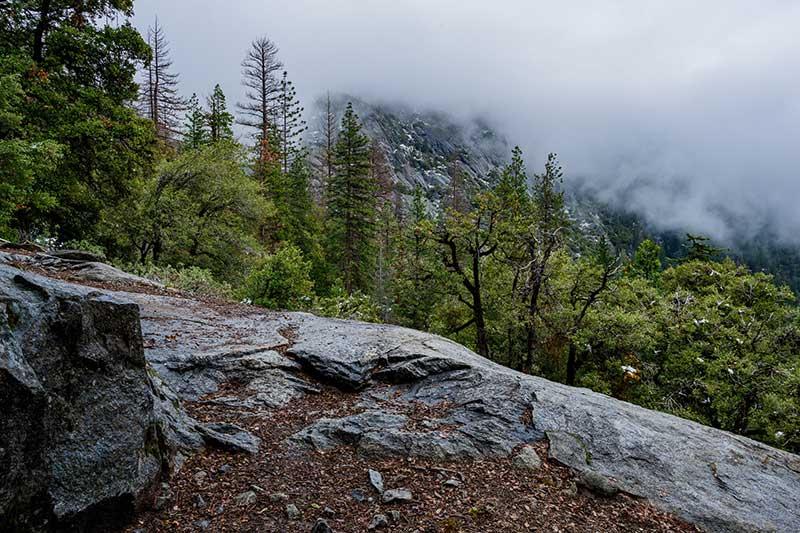Today I walked again. I found much to marvel at and many interesting encounters along the way. I saw a parent quail with several newly hatched chicks and wondered where the other parent was. A parent of any species tending their young is always strangely engaging, regardless how often we see it. The faith of the youngsters in the parent, the parent’s earnest caretaking, the promise of renewal and continuity, even the recognition that many of the young (and old) will be taken by predators—it always brings a smile. And sometimes a few tears, touched as we are by such trust and devotion and presentiments of loss. I am thankful for these things and the chance to share them.
Once I embraced a giant pine in order to sniff its bark. Jeffrey Pines are said to smell a bit like vanilla but I couldn’t detect it. I did the same another time with an incense cedar, hugging and sniffing. Both times I noticed as I drew my face back an involuntary stroking of my hands on the tree, gently, as I would a loved person. It seemed simultaneously strange to find myself doing this and yet utterly appropriate. Strokes are for the doer as much as the recipient; I felt tender toward those trees and their silent, solemn aliveness.
I think it nearly impossible to pay close attention to trees, whether individually or as forests, and not be affected. So steadfast and graceful, they easily become companions. It seems a miracle they can stand so high, waver in the wind and remain upright. Were I the creator, I’d never have had the imagination to try something that seems so improbable. A freshly fallen, still living tree evokes sympathy and a frustrated wish to make it right again. While a long dead “nursery” tree supporting a linear stand of youngsters makes me smile and say thanks on their behalf.
As John Muir followed sheep up into the Sierra Nevada on his initial foray 141 years ago, he mentioned that “Another conifer was met today—incense cedar…” That “was met” tells that this was encounter with individual life and recognized as such. “I feel strangely attracted to this tree…It would be delightful to be storm-bound beneath one of these noble, hospitable, inviting old trees…”
Earlier than this, in the seventeenth century, an adolescent was converted and brought to God by a tree. He became Brother Lawrence of the Resurrection, a monk admired for his steady “practice of the presence of God” and his humility. Almost four decades after his conversion he described the experience to his Abbe who recorded the conversation. “One winter’s day he saw a tree stripped of its leaves, and considered that sometime afterwards these leaves would appear again, followed by flowers and fruit. He then received a lofty awareness of the providence and power of God which never left him.” Well, of course. Who wouldn’t tend to react that way if he really thought about it? Botany and theology become one. (The Practice of the Presence of God)
J. Krishnamurti seems once to have spent the entirety of several days entranced and enlightened by a tree. At sunrise it became golden leaves filled with life, and “…as the hours pass by, that tree whose name does not matter—what matters is that beautiful tree—an extraordinary quality begins to spread all over the land, over the river.” Each hour reveals new tree qualities: brightness, liveliness, somberness, quietness, dignity. One may sit in the shade beneath it, “…never feeling lonely with the tree as your companion.” At sunset finally the tree rests. “If you establish a relationship with it, then you have relationship with mankind. You are responsible then for that tree and for the trees of the world. But if you have no relationship with the living things on this earth, you may lose whatever relationship you have with humanity…” Later, ending a meditation on the human propensity to kill, he extends this thought: “If we could, and we must, establish a deep, long abiding relationship with nature—with the actual trees, the bushes, the flowers, the grass, and the fast moving clouds—then we would never slaughter another human being for any reason whatsoever.” (My apology to the publisher from whose book I drew these thoughts; I have lost the reference.)
Even Martin Buber, who recognized Nature as a distinct realm of Thou relatedness without being very comfortable there himself, spoke about trees. He knew they could be “It,” a species, a botanical member of an ecosystem, just lumber. “In all this the tree remains my object…It can, however, also come about, if I have both will and grace, that in considering the tree I become bound up in relation to it.” And more: “The tree is no impression, no play of my imagination, no value depending on my mood; but it is bodied over against me and has to do with me, as I with it—only in a different way.” (I and Thou)
To paraphrase an old television commercial, “These are not your father’s trees.” (The vast majority of those have been clear-cut.) But they are real trees and possible relations. I have been to the forest, and with Muir and the others, I have met these trees.
Photo by Akshay Nanavati on Unsplash


